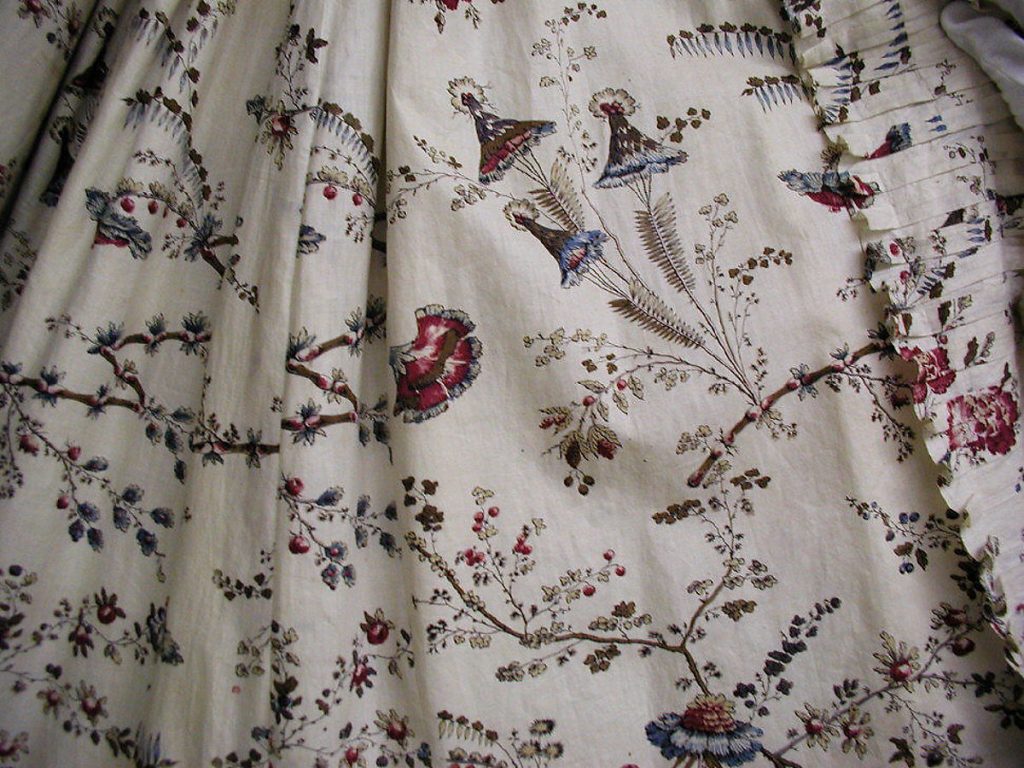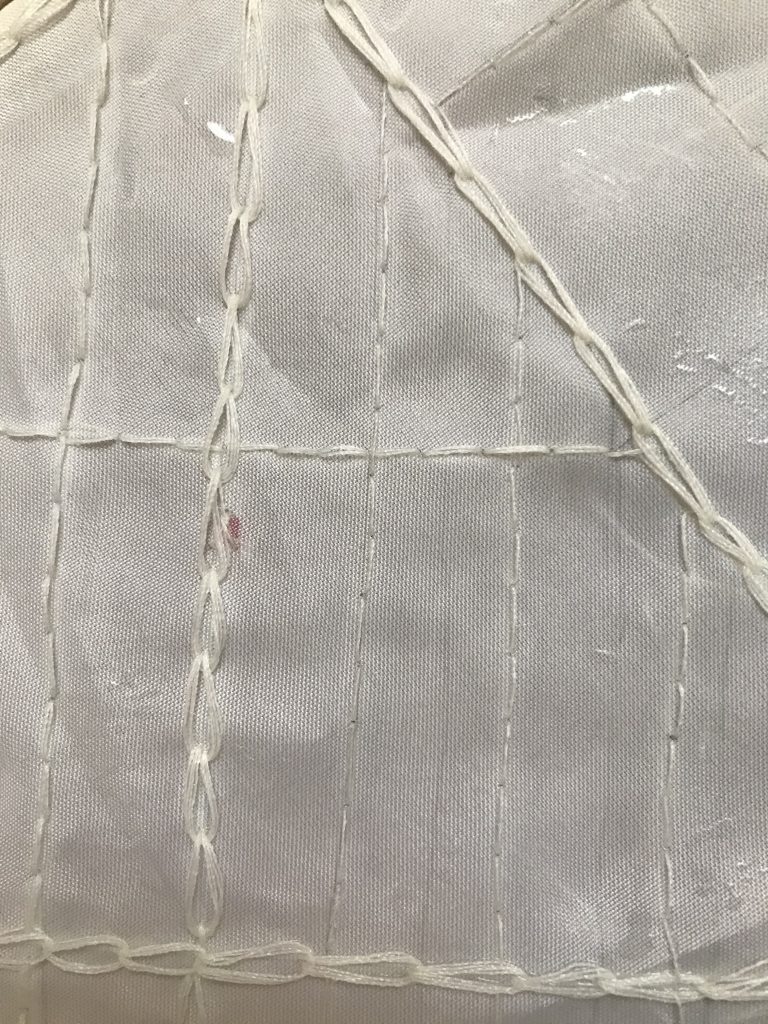
I was drawn to this textile because of the contrasting colors and diagonal orientation of the flowers. I think the shifted repeated pattern is interesting, and I enjoy the way my eye is able to move along the paths created. I was also engaged with this piece because the flowers appear to be stamped, and I love the handmade feeling.

Link: https://www.flavorpaper.com/wallpaper/patterns/handscreened/vigilant-floral
This repeated pattern was captivating to me because it felt like a modern take on the Russian floral pattern I found. The repeated pattern is also offset at a diagonal that I appreciate, and I enjoy the elegant delicacy of the design. I like how the video surveillance cameras add an element of surprise that adds another layer to the pattern. Another surprising feature that pulls the floral pattern out of the traditional realm is the razor wire. Upon first glance, I assumed the razor wire was vines, but I like the added commentary to this design.
































